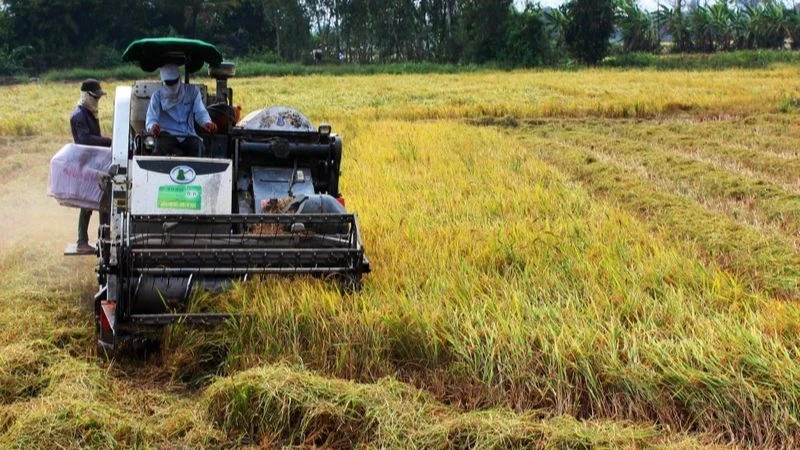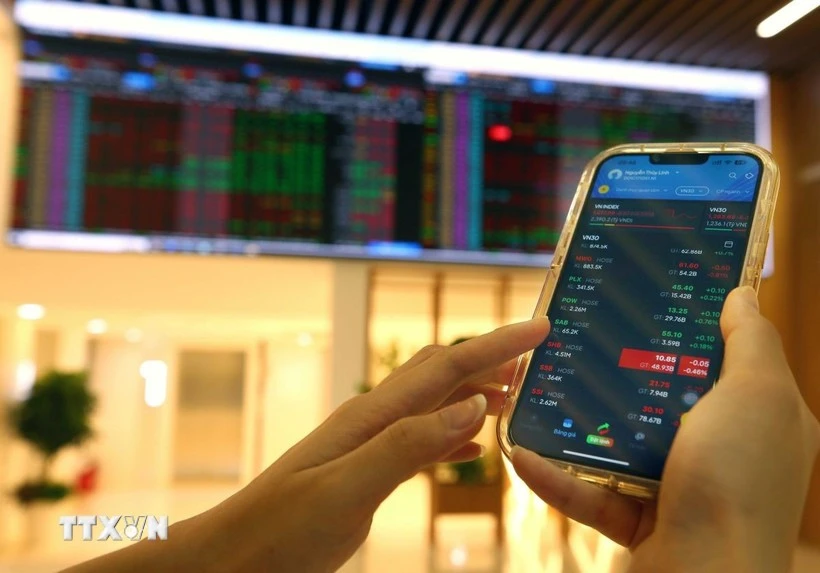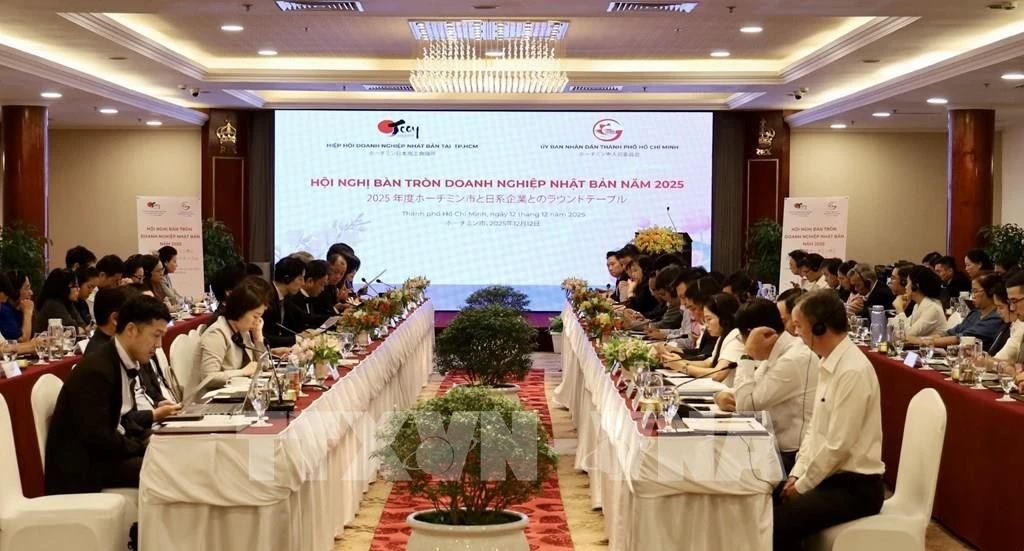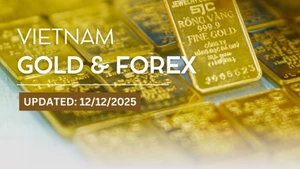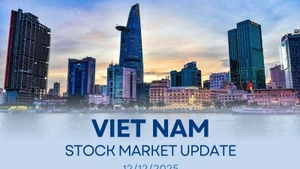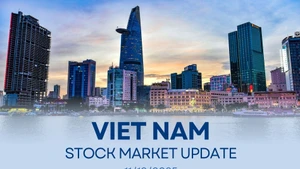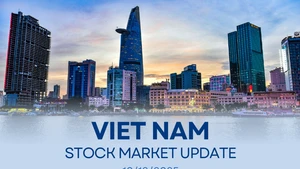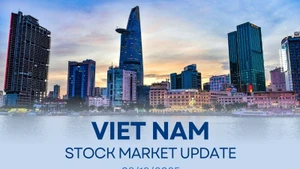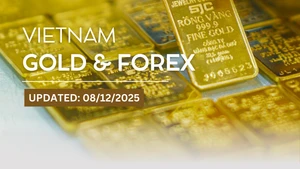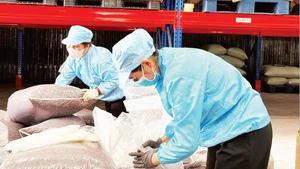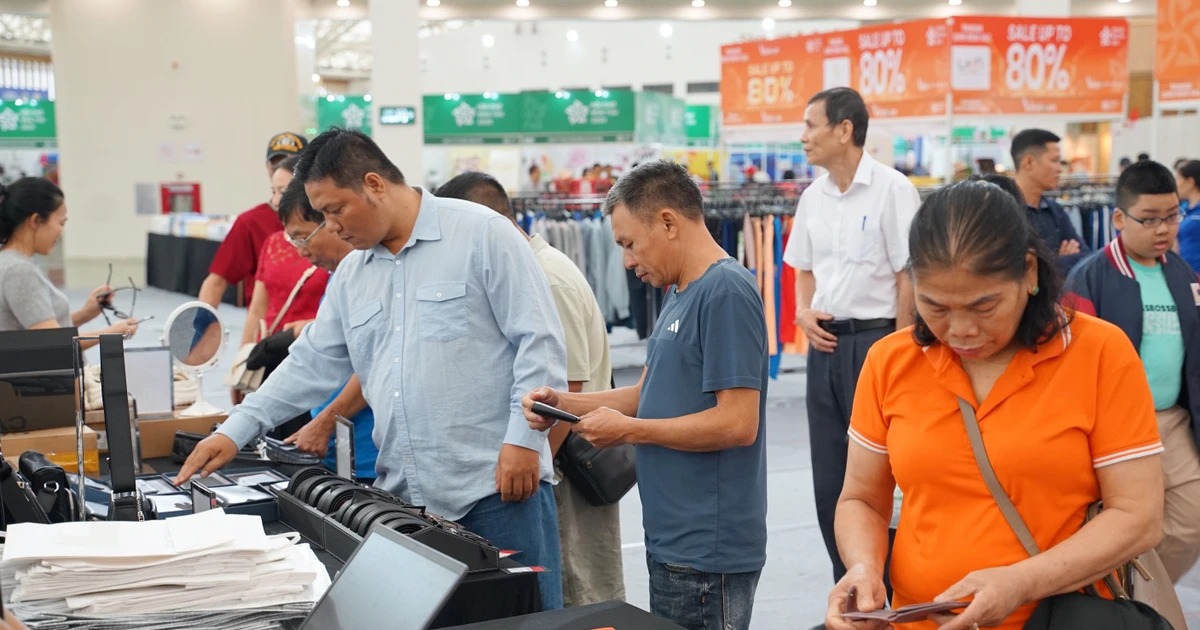Rice – A key commodity facing emission reduction demands
Rice has long been a pillar of Viet Nam’s agricultural sector, playing a vital role in national food security, economic growth, social stability, and export performance. In 2024, Viet Nam’s rice export revenue reached approximately 5.66 billion USD with a volume of nearly 9 million tonnes, reaffirming the sector’s strong international position.
However, these positive results come with considerable environmental challenges. According to the World Bank, rice cultivation accounts for up to 48% of total greenhouse gas emissions in the agricultural sector, with methane (CH₄)—a gas with a far greater warming potential than CO₂—making up more than 75% of these emissions. This is a particularly alarming figure as Viet Nam strives to fulfil its international climate commitments.
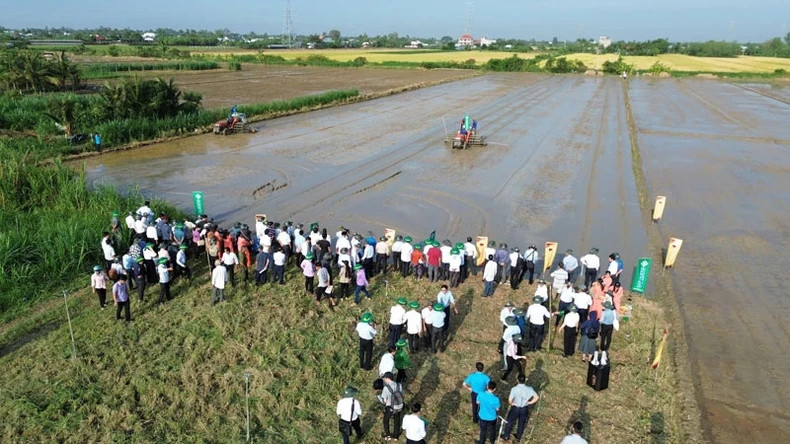 |
| Tien Giang province implements the 'One million hectare of high-quality rice project'. |
In recent years, several low-emission rice production models have been piloted, yielding promising outcomes. Notably, the alternate wetting and drying (AWD) irrigation method, combined with post-harvest straw management—rather than open-field burning or decomposition—has shown success. These solutions not only reduce methane and nitrous oxide (N₂O) emissions but also improve water efficiency, reduce input costs, and increase productivity.
According to Dr Tran Ngoc Thach, Director of the Mekong Delta Rice Institute, the two key elements of low-emission rice farming are effective water management and efficient straw treatment. However, the success of implementation largely depends on irrigation infrastructure and terrain conditions. In areas with well-developed irrigation systems, the models are effective; but in regions with fragmented fields and complex terrain, implementation faces significant hurdles.
The two key elements of low-emission rice farming are effective water management and efficient straw treatment.
Dr Tran Ngoc Thach,
Director of the Mekong Delta Rice Institute
Dr Thach noted: “In practice, it’s not always necessary to strictly apply 100% of the technical protocols. If farmers can implement 50–70% of the process and still achieve significant emission reductions, such efforts should be encouraged and scaled up.”
Strengthening value chain linkages to realise one million hectares of high-quality rice target
A major strategic direction for the agricultural sector is the implementation of the 'One million hectare of high-quality rice project' for high-quality, low-emission rice cultivation aligned with green growth, centred in the Mekong Delta—which accounts for over 50% of the nation’s rice output.
According to Le Thanh Tung, Standing Vice President and General Secretary of the Viet Nam Rice Industry Association (Vietrisa), this is a sound and long-term strategic move. In recent times, efforts ranging from communications, pilot models, to mid- and long-term planning have been launched in a coordinated manner, initially demonstrating promising feasibility.
However, after one year of implementation, the Vietrisa notes that several issues still require attention. Notably, the roles and involvement of key stakeholders in the value chain remain underdeveloped. Current activities mainly involve farmers, cooperatives, input suppliers, and research institutions. Yet, a crucial link—large-scale rice buyers and market connectors—has yet to receive due emphasis.
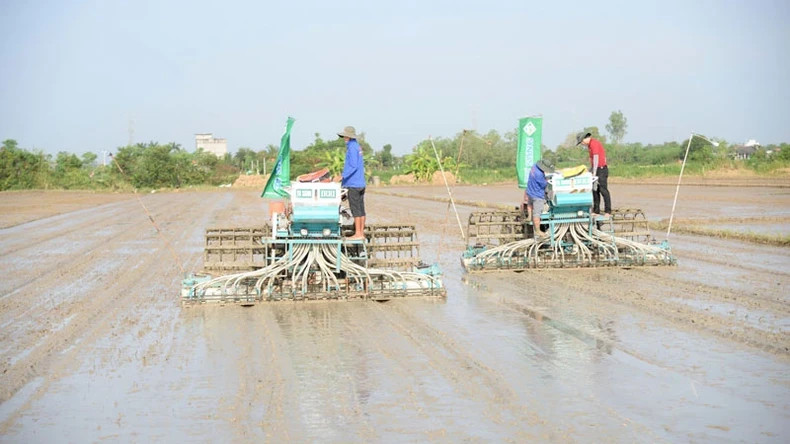 |
| Pilot models under the 'One million hectare of high-quality rice project' remain small in scale—ranging from a few hundred to a few thousand hectares or tens of thousands of tonnes of rice. |
At present, pilot projects remain modest in scale—just a few hundred to a few thousand hectares or tens of thousands of tonnes of rice—whereas the project aims to reach 1 million hectares with an output of around 13 million tonnes per year. This gap underscores the need to refine technical content, production organisation, and market linkage mechanisms to create a solid foundation for broad expansion.
Another challenge lies in the lack of standardised tools to measure emissions, making it difficult to assess actual effectiveness. Tung remarked: “Without transparent tools to quantify and verify greenhouse gas reductions, it will be very hard to access the carbon credit market—a pathway with strong potential to boost farmers’ incomes.”
Experts also point out that full participation across the value chain is still lacking. While farmers, cooperatives, and input businesses are relatively engaged, downstream actors such as processing and exporting companies are not yet well-integrated into the system. This poses a significant barrier to large-scale expansion in the near future.
From a scientific standpoint, Dr Tran Ngoc Thach commented that while current technical protocols may be deemed acceptable for now, given limited in-depth research, effective field application requires flexible technical specifications tailored to local conditions.
“The flexible adoption of 50 to 70% of technical protocols, if it achieves emission reductions, should be encouraged rather than rigidly enforced. Without such flexibility, widespread deployment would be extremely difficult,” Dr Thach noted.
Looking ahead, Dr Thach proposed several long-term solutions, including the full-scale application of technical measures that demand substantial investment in irrigation and smart water management systems. At the same time, research into biological approaches—such as developing rice varieties and bioproducts that suppress methane-producing microbes in flooded conditions—should be intensified. These are seen as sustainable solutions not only for the one million hectares of high-quality rice in the current project but also for over four million hectares of rice land nationwide.
